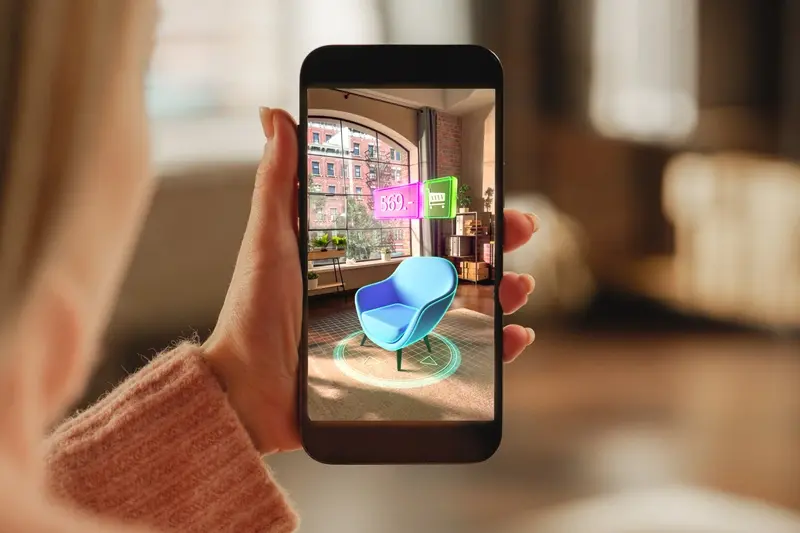How Long Does It Take to Build a Mobile App MVP?
Every entrepreneur asks the same question when they have a brilliant app idea: "How long will this take to build?" The answer isn't as straightforward as you might hope. Building a mobile app MVP can take anywhere from 6 weeks to 6 months, depending on what you're trying to create and how you approach it.
The thing is, most people dive straight into development without understanding what an MVP actually means for their timeline. They think they need every feature they've dreamed up, when really they need the bare minimum to test their core idea with real users. This misunderstanding is what turns a 3-month project into a 9-month marathon.
The biggest mistake I see is people confusing an MVP with a basic version of their final product, when it should be the simplest version that proves their concept works
Understanding your MVP timeline isn't just about managing expectations—it's about making smart decisions with your budget and resources. Whether you're a startup founder burning through investment or an established business exploring new markets, knowing what affects development time can save you months of delays and thousands of pounds. Let's break down exactly what goes into building an MVP and how long each stage really takes.
What Is an MVP and Why Build One First
An MVP—or Minimum Viable Product—is basically the simplest version of your app that still works and solves the main problem you set out to fix. Think of it as your app's foundation; it has the core features people need but nothing fancy or extra. No bells and whistles, just the bits that matter most.
I've worked with countless clients over the years who want to build the next big thing straight away. They come to me with these massive feature lists and grand visions. But here's what I've learned: starting with an MVP isn't just smart—it's necessary. You get to test your idea with real users without spending a fortune or waiting months for development.
Why an MVP Makes Financial Sense
Building a full-featured app from day one is expensive and risky. An MVP lets you validate your concept quickly and cheaply. If users don't like your core idea, you'll find out early rather than after spending thousands on features nobody wants.
The Main Benefits of Starting Small
- Get to market faster and start earning revenue sooner
- Test your assumptions with real user feedback
- Reduce development costs and financial risk
- Learn what features users actually want
- Build a loyal user base from the beginning
Trust me, every successful app you use today started as something much simpler. The key is getting that core functionality right first.
Planning Your MVP - Features and Scope
Right, let's talk about the bit that makes or breaks your MVP timeline—deciding what actually goes into it. After eight years of building apps, I can tell you that feature creep is the silent killer of every project schedule. You'll start with a simple idea, then suddenly you're adding push notifications, social sharing, advanced analytics, and before you know it your three-month MVP has become a nine-month monster.
The secret is being ruthless about what your users actually need on day one. I always tell clients to focus on the single most important thing their app does—that one feature that solves the core problem. Everything else is nice to have, not need to have. A good rule of thumb is if you can't explain why a feature is absolutely critical to your app's success in one sentence, it probably shouldn't be in your MVP.
Core Features vs Nice-to-Have Features
When planning your feature list, split everything into two columns: must-have and maybe-later. Your must-have list should be short—typically three to five core features maximum. User registration, the main functionality, and basic settings. That's often enough for a solid MVP that you can get to market quickly.
Write down every feature idea on sticky notes, then physically move them into "Version 1" and "Future Versions" piles. This visual exercise helps you see just how bloated your initial scope might be.
Remember, your MVP isn't your final product—it's your starting point. You can always add more features based on real user feedback once you've launched.
Design Phase Timeline for Mobile Apps
The design phase is where your MVP starts to come alive visually—and honestly, it's one of my favourite parts of the entire process. After years of working with clients, I've noticed that most people underestimate how long good design takes. They think it's just about making things look pretty, but there's so much more happening behind the scenes.
User Experience Design
We start with user experience design, which typically takes 1-2 weeks for a simple MVP. This involves creating wireframes and user flows; basically mapping out how someone will navigate through your app. It's not glamorous work, but it's the foundation that everything else builds on. Skip this step and you'll regret it later—trust me on that one!
Visual Design and Prototyping
Once the UX is sorted, we move into visual design and prototyping. This usually takes another 1-2 weeks depending on how complex your app is. We're talking about choosing colours, fonts, icons, and creating that polished look you'll be proud to show off. The prototype lets you actually click through your app before any code gets written, which saves huge amounts of time later.
Most MVPs need about 2-4 weeks total for the design phase. Simple apps with basic layouts sit at the lower end, while apps with custom illustrations or complex user interfaces need the full timeframe.
Development Time Breakdown by Platform
When you're planning your MVP timeline, the platform choice makes a bigger difference than most people realise. I've built apps for iOS, Android, and cross-platform solutions—and the development time varies quite a bit between them.
iOS development typically takes around 20-30% less time than Android for the same features. This isn't because iOS is easier to code for (though some developers would argue it is), but because there are fewer device variations to worry about. You're dealing with a controlled ecosystem where you know exactly what screen sizes, hardware capabilities, and operating system versions you need to support.
Native vs Cross-Platform Development
Android development takes longer because of device fragmentation—you need to test on dozens of different screen sizes and Android versions. A simple feature that works perfectly on one device might break completely on another.
The beauty of cross-platform development is that you write the code once and deploy it everywhere, but the reality is you still need platform-specific adjustments
Cross-platform solutions like React Native or Flutter can reduce your overall development time by 30-40% compared to building separate native apps. But here's the catch—you might hit limitations later that require native code anyway. For an MVP though, cross-platform often makes perfect sense; you get to market faster and can validate your idea across both platforms simultaneously.
Testing and Quality Assurance Duration
After spending weeks building your MVP, you might think you're nearly done. Wrong! Testing takes longer than most people expect—and skipping it properly will come back to bite you later.
For a basic MVP, you're looking at roughly 2-3 weeks of testing. This isn't just someone clicking around the app for an hour; we're talking about systematic testing that covers different devices, operating systems, and user scenarios. I've seen too many apps launch with embarrassing bugs that could have been caught with proper testing.
What Gets Tested During QA
- Core functionality works as expected
- App doesn't crash on different devices
- User interface displays correctly across screen sizes
- Performance under different network conditions
- Security vulnerabilities and data protection
- App store submission requirements
The testing phase often reveals issues that need fixing, which adds time back to development. It's not unusual to go through 2-3 rounds of testing and fixes before everything works smoothly.
Platform-Specific Testing Considerations
iOS apps generally need less testing time because there are fewer device variations to worry about. Android testing takes longer—there are hundreds of different Android devices out there, each with slightly different behaviours. Testing on just a few popular models isn't enough; you need to cover different screen sizes, Android versions, and hardware capabilities.
Common Delays That Extend MVP Timelines
After building hundreds of MVPs over the years, I can tell you that delays are part of the process—but some are more avoidable than others. The most common delay I see is scope creep, where clients suddenly decide they need "just one more feature" that seems simple but requires significant development time. What starts as a basic login system becomes social media integration, push notifications, and user profiles.
Technical Challenges and Third-Party Dependencies
API integrations often cause unexpected delays. Payment gateways, social media logins, and mapping services can take longer than expected to implement properly. Sometimes third-party services change their requirements or experience downtime, which pushes your timeline back through no fault of your own.
Device compatibility issues are another culprit. What works perfectly on one phone might crash on another, requiring additional testing and fixes. Android fragmentation is particularly challenging here—with thousands of different devices running various OS versions.
Communication and Approval Bottlenecks
Delayed feedback from stakeholders can add weeks to your project duration. When design approvals take a fortnight instead of a few days, the entire development time gets pushed back. Team availability issues—developers getting sick, designers going on holiday—can also impact your minimum viable product timeline unexpectedly.
Build buffer time into your MVP timeline from the start. I typically add 20-30% extra time to account for unexpected delays and scope changes.
Realistic Timeline Expectations for Different App Types
After years of building everything from simple utility apps to complex social platforms, I can tell you that not all apps are created equal when it comes to development time. The type of app you're building makes a massive difference to your timeline—and I mean massive.
Let me break down what you can realistically expect for different app categories. A simple utility app like a calculator or note-taking tool? You're looking at 4-8 weeks for an MVP. These apps usually have straightforward functionality and don't need complex backend systems.
App Type Timeline Breakdown
- Simple utility apps: 4-8 weeks
- Content-based apps (news, blogs): 8-12 weeks
- E-commerce apps: 12-16 weeks
- Social media apps: 16-24 weeks
- On-demand service apps: 20-28 weeks
- Complex marketplace apps: 24-32 weeks
Social media and marketplace apps take the longest because they need user authentication, real-time messaging, payment systems, and robust backend infrastructure. On-demand apps like food delivery or ride-sharing fall somewhere in the middle—they're complex but the core functionality is well-established.
What Affects These Timelines
Your chosen features will push these numbers up or down. Real-time chat adds weeks; payment integration adds complexity; user-generated content needs moderation systems. The platform choice matters too—building for both iOS and Android simultaneously will extend your timeline by 30-50%.
Conclusion
Building an MVP isn't a race—it's about getting your app into users' hands as quickly as possible whilst still delivering something valuable. From my experience working with countless startups and established companies, I've seen teams stress about timelines when they should be focusing on what really matters: creating something people actually want to use.
The timeline for your MVP will depend on your specific app type, chosen platform, and how well you've planned your features. A simple utility app might take 8-12 weeks; a more complex social or marketplace app could stretch to 16-20 weeks. But here's what I've learned—these timelines are meaningless if you haven't properly defined your MVP scope first.
The biggest mistake I see teams make is trying to build everything at once. Your MVP should solve one core problem really well, not ten problems poorly. Start small, launch quickly, and iterate based on real user feedback. That's how you build something that actually succeeds in the market.
If you're feeling overwhelmed by the process, that's completely normal. Every successful app started with someone staring at a blank screen wondering where to begin. The key is taking that first step—and now you know exactly how long the journey should take.
Share this
Subscribe To Our Learning Centre
You May Also Like
These Related Guides

How Long Does It Take To Develop An AR Mobile App?

How Do I Select the Right Development Approach for My Mobile App?



